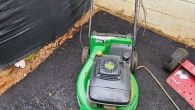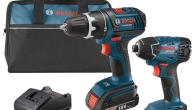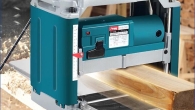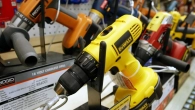
What are power tools: From DIY Dreams to Industrial Workhorses
Power tools. The name itself conjures images of whirring saws, hammering drills, and the satisfaction of a job well done. But what exactly are power tools, and how did they revolutionize the way we work? Buckle up, for we’re diving into the fascinating world of these electric (and sometimes not-so-electric) marvels.
In essence, a power tool is any tool that gets its muscle not from human power alone, but from an external source. This source can be electricity, a compressed air line, or even a gasoline engine. Compared to their purely manual counterparts, power tools offer a significant advantage: they are faster, stronger, and more precise.
This translates to a wide range of applications. Construction sites teem with power tools, from drills boring into concrete to saws carving lumber. In factories, power tools tirelessly shape metal, plastic, and wood into finished products. Even in our homes, power tools empower DIY enthusiasts to tackle projects, from building bookshelves to fixing leaky faucets.
Let’s delve deeper into the two main categories of power tools: electric and non-electric.

Electric Powerhouses
Electric power tools are the most common type, drawing their energy from a power outlet or a rechargeable battery. The electric motor within the tool converts this energy into mechanical force, allowing it to perform its specific task. Common household examples include:
- Drills: The workhorses of the toolbox, drills create holes in various materials, from wood to masonry. Different drill types exist, each with its strengths. Impact drivers excel at driving screws, while rotary hammers conquer concrete.
- Saws: From the versatile circular saw to the precise jigsaw, saws come in all shapes and sizes, each designed for a specific cutting task. Mitre saws handle intricate angles with ease, while reciprocating saws tackle demolition jobs.
- Sanders: Smoothing rough surfaces is the domain of sanders. Orbital sanders offer a large, swirling motion, while detail sanders excel in tight corners.
So, how did these electric marvels come to be? The story begins in the 19th century with the invention of the electric motor. Early power tools were heavy and cumbersome, but advancements in motor technology and battery design have led to the lightweight and powerful tools we use today.

Beyond the Cord: Pneumatic and Gas-Powered Options
While electric power tools dominate the DIY and household scene, there are other options for industrial applications and specific tasks.
- Pneumatic Tools: These tools are powered by compressed air, often supplied by an air compressor. Popular examples include nail guns and impact wrenches. Pneumatic tools offer high power and are well-suited for repetitive tasks.
- Gas-Powered Tools: For situations where electricity is unavailable, gas-powered tools like chainsaws and lawnmowers take over. These tools are powerful and portable, making them ideal for outdoor work.

Choosing the Right Power Tool
With so many power tools available, selecting the right one for the job can feel overwhelming. Here are some key factors to consider:
- Project Requirements: What task do you need the tool for? Cutting wood requires a different tool than drilling holes in metal.
- Power Source: Do you have easy access to an outlet, or will you need a cordless option?
- Budget: Power tools range in price from budget-friendly to professional-grade. Consider the frequency of use when making your decision.
- Safety Features: Look for features like safety switches and guards to minimize the risk of accidents.

Safety First: Essential Power Tool Tips
Power tools are incredibly useful, but they can also be dangerous if not used properly. Here are some safety tips to remember:
- Always wear safety glasses and appropriate hearing protection.
- Read the manual thoroughly before using any power tool.
- Ensure the tool is in good working condition and all safety features are functional.
- Never force a tool. If it’s not working correctly, stop and troubleshoot.
- Unplug electric tools before changing blades or attachments.
- Be mindful of cords and hoses to avoid tripping hazards.
DIY enthusiasts and hobbyists
DIY enthusiasts and hobbyists of power tools are a passionate bunch who enjoy taking on projects around the house and workshop. They use a variety of power tools to complete these projects, from drills and saws to sanders and routers. These tools allow them to cut, drill, shape, and assemble materials to create everything from furniture and shelves to decks and fences.

Power Tools: Shaping Our World
From the towering skyscrapers to the intricate furniture in our homes, power tools have left their mark on the world we live in. They empower professionals and DIYers alike, making complex tasks more manageable and efficient. As technology continues to evolve, we can expect even more innovative and user-friendly power tools to emerge, shaping the way we build, create, and repair for years to come. So, the next time you pick up a power tool, take a moment to appreciate the ingenuity and power it represents. After all, it’s not just a tool; it’s an extension of human capability.












Leave a Reply